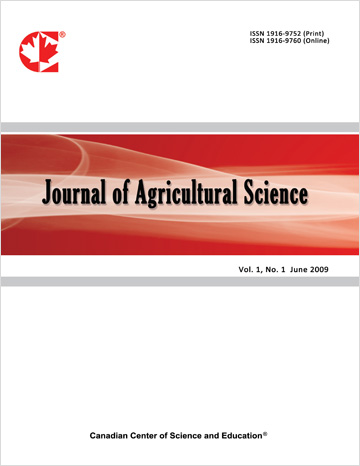Establishing Irrigation Levels Targeting Higher Content of Lycopene and Water Use Efficiency in Tomato
- Fábio T. Delazari
- Ronaldo S. Gomes
- Bruno S. Laurindo
- Renata D. F. Laurindo
- Luan B. Giovanelli
- Davi S. de Freitas
- Everardo C. Mantovani
- Derly J. H. da Silva
Abstract
The demand for healthier foods has been increasing worldwide. Associated with this trend, it is crucial to optimize the use of inputs for ensuring the sustainability of production. The fruits of tomato are important sources of minerals, vitamins, and especially of carotenoids such as the lycopene. This carotenoid plays biological activities that are crucial such as the antioxidant function, besides its proven action in the prevention of cancers and degenerative diseases. The irrigation seems to play a fundamental role in the biosynthesis of lycopene. Thus, it is fundamental to establish levels of irrigation that might provide higher content of lycopene, productivity, and efficiency in the use of water in the production of tomato. The objective of this study was to establish adequate levels of irrigation for the obtainment of higher content of lycopene, productivity of fruits, and higher efficiency in the use of water in the production of salad tomato. For this, two experiments were carried in different cropping seasons. The treatments consisted of the application of four irrigation depths, corresponding to 50, 100, 150 and 200% of the tomato evapotranspiration. The estimates of maximum productivity corresponded to the application of the irrigation depth of 112% ETc, while the maximum content of lycopene and the higher efficiency in the use of water corresponded to 50% ETc. The irrigation depth of 100% ETc is recommended as the best irrigation depth to obtain higher content of lycopene, productivity, and efficiency in the use of water jointly.
- Full Text:
 PDF
PDF
- DOI:10.5539/jas.v11n1p209
Journal Metrics
- h-index: 67
- i10-index: 839
- WJCI (2023): 0.884
- WJCI Impact Factor (2023): 0.196
Index
- AGRICOLA
- AGRIS
- BASE (Bielefeld Academic Search Engine)
- Berkeley Library
- CAB Abstracts
- ChronosHub
- CiteSeerx
- CNKI Scholar
- Copyright Clearance Center
- CrossRef
- DESY Publication Database
- DTU Library
- e-Library
- EBSCOhost
- EconPapers
- Elektronische Zeitschriftenbibliothek (EZB)
- EuroPub Database
- Excellence in Research for Australia (ERA)
- Google Scholar
- Harvard Library
- IDEAS
- iDiscover
- Jisc Library Hub Discover
- JournalTOCs
- KindCongress
- LIVIVO (ZB MED)
- LOCKSS
- Max Planck Institutes
- Mendeley
- MIAR
- Mir@bel
- NLM Catalog PubMed
- Norwegian Centre for Research Data (NSD)
- Open J-Gate
- OUCI
- PKP Open Archives Harvester
- Polska Bibliografia Naukowa
- Qualis/CAPES
- RefSeek
- RePEc
- ROAD
- ScienceOpen
- Scilit
- SCiNiTO
- Semantic Scholar
- SHERPA/RoMEO
- Southwest-German Union Catalogue
- Standard Periodical Directory
- Stanford Libraries
- SUDOC
- Swisscovery
- Technische Informationsbibliothek (TIB)
- Trove
- UCR Library
- Ulrich's
- UniCat
- Universe Digital Library
- WorldCat
- WRLC Catalog
- Zeitschriften Daten Bank (ZDB)
Contact
- Anne BrownEditorial Assistant
- jas@ccsenet.org
